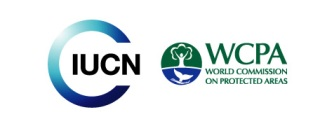Tools for Tourism and Visitor Management
Chapter Coordinator: Elizabeth Halpenny and Theresa Salenieks
Chapter contributors: Elizabeth Halpenny, Theresa Salenieks, Robert Manning, Ian Bride, Andy Thompson, Midori Paxton, Jim Barborak, P.J. Massey, Paul Eagles, Giulia Carbone, Dan Paleczny, Lisa M. King, Chengzhao Wu, Xiaoping Zhang, Jianghua Ran, Jorge M. Chávez, Jake Paleczny, Donald Hawkins, Ivana Damnjanović, Erik Val, Kurt Holle.
Chapter 8 Table of Contents
8.1 Introduction
8.2 Tourism and Visitor Management Tools
- 8.2.1 Regulatory and Planning TOols
- 8.2.2 Site Design and Sustainable Infrastructure Development
- 8.2.3 Sustainable Transportation and Travel Patterns
- 8.2.4 Law Enforcement
- 8.2.5 Security and Safety
- 8.2.6 Economic and Marketing Tools
- 8.2.7 Marketing and Communications
- 8.2.8 Use of Technologies
- 8.2.9 Education and Interpretation
- 8.2.10 Certifications
- 8.2.11 Concessions
- 8.2.12 Partnerships
8.3 Efficacy Evaluation of Management Tools
8.4 Guidelines
References
- Archer, D., & Wearing, S. (2002). Interpretation and marketing as management tools in national parks: Insights from Australia. Journal of Retail & Leisure Property, 2(1), 29-39.
- Armstrong, E. K., & Kern, C. L. (2011). Demarketing manages visitor demand in the Blue Mountains National Park. Journal of Ecotourism, 10(1), 21-37.
- Borrie, W. T., Christensen, N. A., Watson, A. E., Miller, T. A., & McCollum, D. (2002). Public purpose recreation marketing: a focus on the relationships between the public and public lands. Journal of Park and Recreation Administration, 20, 49-68.
- Brown, P. J., Driver, B. L., & McConnell, C. (1978). The opportunity spectrum concept and behavioral information in outdoor recreation supply inventories: background and application. In Lund, H. G., LaBau, V. J., Ffolliott, P. F., and Robinson, D. W. (Tech. Coords.), Integrated Inventories of Renewable Natural Resources (pp. 73-84). Fort Collins, CO: USDA Forest Service, Rocky Mountain Forest and Range Experiment Station.
- Brown, P. J., Driver, B. L., Bruns, D. H., & McConnell, C. (1979). The outdoor recreation opportunity spectrum in wildland recreation planning: Development and application. In Proceedings of the 1st Annual Conference on Recreation Planning and Development. Vol. II. (pp. 527-538). New York: American Society of Civil Engineers.
- Bruner, A. G., Sweeting, J. E., & Rosenfeld, A. B. (1999). The green host effect: An integrated approach to sustainable tourism and resort development.
- Buckley, R. (2009). Parks and tourism. PLoS Biology, 7(6), 1-2.
- Cable, S., & Watson, A. E. (1998). Recreation Use Allocation: Alternative Approaches for the Bob Marshall Wilderness Complex (RMRS-RN-1). Ogden, UT: USDA Forest Service, Rocky Mountain Research Station. Online Resource
- CaGBC (2013). LEED. Available: http://www.cagbc.org/AM/Template.cfm?Section=LEED [2013, 04/23].
- Caissie, L. T. and Halpenny, E. A. (2003). Volunteering for nature: motivations for participating in a biodiversity conservation volunteer program. World Leisure Journal 45(2):38-50.
- Children in the Wilderness.com (2013). Children in the Wilderness accessed February 2013 at www.childreninthewilderness.com
- Clark, R. N., & Stankey, G. H. (1979). The Recreation Opportunity Spectrum: A Framework for Planning, Management, and Research (Research Paper PNW-98). Portland, OR: USDA Forest Service, Pacific Northwest Forest Experiment Station. Online Resource
- Coad, L., Campbell, A., Miles, L., & Humphries, K. (2008). The costs and benefits of protected areas for local livelihoods: a review of the current literature. Cambridge, UK, UNEP World Conservation Monitoring Centre.
- Dearden, P., & Rollins, R. (Eds.). (2009). Parks and protected areas in Canada: Planning and management. Toronto: Oxford University Press.
- Dickinon, J. & Bonney, R. 2012, Citizen Science : Public Participation in Environmental Research, Comstock Pub. Associates, Ithica.
- Driver, B. L., & Brown, P. J. (1978). The opportunity spectrum concept and behavioural information in outdoor recreation resource supply inventories: a rationale. In: Integrated inventories of renewable natural resources: proceedings of the workshop, January 1978, Tucson, Arizona (Edited by HG Lund et al.).USDA Forest Service, General Technical Report, (RM-55), 24-31.
- Font, X., Epler-Wood, M., Black, R., & Crabtree, A. (2007). Sustainable tourism certification marketing and its contribution to SME market access. Quality assurance and certification in ecotourism, 5, 147. Online Resource
- Esparon, M. C. (2013). The role of certification in advancing the sustainable tourism agenda: a case study of the ECO certification scheme in the Wet Tropics World Heritage Area (WTWHA) (Doctoral dissertation, James Cook University).
- Europarc Federation (nd). Joining forces: How the European Charter for Sustainable Tourism in Protected Areas is successfully implementing the Convention on Biological Diversity guidelines for biodiversity and tourism development. Downloaded 31 October 2013 from http://www.europarc.org/uploaded/documents/462.pdf.
- Europarc Federation (2012). Practical, profitable, protected: A starter guide to developing sustainable tourism in protected areas. Latvia: European Centre for Eco and Agro Tourism in partnership with the EUROPARC Federation, 84 pp. Online Resource
- Feynan.com (2013). Faynan Ecolodge home page. Downloaded 31 October 2013 from http://www.feynan.com/.
- Geoinformatics (2003). Location-based services for mobile users in protected areas. Available: http://www.soi.city.ac.uk/~dmm/research/pubs/webPark-GeoInformatics-March2003-publishedVersion.pdf [2013, 05/20]
- Haaland, H., & Aas, Ø. (2010). Eco‐tourism Certification–Does it Make a Difference? A Comparison of Systems from Australia, Costa Rica and Sweden. Scandinavian Journal of Hospitality and Tourism, 10(3), 375-385.
- Hall, C. M., & McArthur, S. (Eds.). (1996). Heritage management in Australia and New Zealand: The human dimension. Sydney: Oxford University Press.
- Hall, M. C., & McArthur, S. (1998). Integrated heritage management: Principles and practice. Stationery Office.
- Halpenny, E. (2007). Financing parks through marketing: A case study of Ontario Parks. Innovation in park tourism, 277-300.
- Halpenny, E. A. and Caissie, L. T. (2003). Volunteering on nature conservation projects: volunteer experience, attitudes and values. Tourism Recreation Research 28(3):25-33.
- Hillbourn, R., Arcese, P., Borner, M., Hando, J., Hopcraft, G., Loiboodi, M., Mduma, S. and Sinclair, A. (2006). Effective enforcement in a conservation area. Science, 314, 1266.
- IGCP (2013). A brief history of IGCP. Available: http://www.igcp.org/about/history/ [2013, 04/23].
- IUCN (2006). Sustainable Financing of Protected Areas: A Global Review of Challenges and Options. Gland, Switzerland: IUCN. Online Resource
- IUCN (2012). Siting and Design of Hotels and Resorts: Principles and Case Studies for Biodiversity Conservation. Gland, Switzerland: IUCN. Online Resource
- Jager, E., & Halpenny, E. A. (2012). Supporting the CBD Aichi Biodiversity Conservation Targets through park tourism: A case study of Parks Canada’s visitor experience programme. Parks, 18(2), 78. Online Resource
- King, L., McCool, S., Fredman, P. and Halpenny, E. (2012). ‘Protected area branding strategies to increase stewardship among park constituencies’. Parks,18(2), 54-63.
- Koss, R., Miller, K., Wescoh, G., Bellgove, A., Boxshall, A., McBurnie, J., Bunce, A., Gilmour, P. & Lerodiaconou, D. (2009). An evaluation of Sea Search as a citizen science programme in Marine Protected Areas, Pacific Conservation Biology, 15, 116-127.
- Krumpe, E. E., & Brown, P. J. (1982). Redistributing backcountry use through information related to recreation experiences. Journal of Forestry, 80(6), 360-364.
- Lucas, R. C. (1982). Recreation Regulations--When Are They Needed? Journal of Forestry, 80(3), 148-151.
- Lucas, R. C. (1983). The role of regulations in recreation management. Western Wildlands, 9(2), 6-10.
- Manning, R. (2011). Studies in Outdoor Recreation: Search and Research for Satisfaction, 3rd ed. Corvallis, Oregon: Oregon State University Press.
- Manning, R. E., & Anderson, L. E. (2012). Managing outdoor recreation: Case studies in the national parks. CABI.
- Manning, R., Lawson, S., Newman, P, Hallo, J., & Monz, C. (2014). Sustainable Transportation in the National Parks. Lebanon, NH: University Press of New England.
- Marion, J. L., Dvorak, R. G., & Manning, R. E. (2008). Wildlife feeding in parks: methods for monitoring the effectiveness of educational interventions and wildlife food attraction behaviors. Human Dimensions of Wildlife, 13(6), 429-442.
- Marion, J., & Reid, S. (2007). Minimizing visitor impacts to protected areas: The efficacy of low impact education programmes. Journal of Sustainable Tourism, 15(1), 5-27.
- Monz, C., Roggenbuck, J., Cole, D., Brame, R., & Yoder, A. (2000). Wilderness party size regulations: implications for management and a decision making framework. Wilderness Science in a Time of Change conference Volume 4: Wilderness visitors, experiences, and visitor management. USDA Forest Service Proceedings RMRS-15, Missoula, Montana. Online Resource
- National Association for Interpretation (NAI). Mission, vision, and core values. Downloaded October 31, 2013 from http://www.interpnet.com/nai/About/What_We_Believe/nai/_About/Mission_Vision_and_Core_Values.aspx?hkey=ef5896dc-53e4-4dbb-929e-96d45bdb1cc1
- National Capitol Commission, 2013. Park and Cycle in Canada’s Capitol. Available at: http://www.ncc-ccn.gc.ca/places-to-visit/parks-paths/things-to-do/park-cycle-canadas-capital [2013, 11/03].
- National Parks Foundation, 2013. National Park Foundation awards $250,000 in grants to support sustainable transportation solutions in Americas National Parks. Available at: http://www.nationalparks.org/connect/npf-news/national-park-foundation-awards-250000-grants-support-sustainable-transportation [2013,11/3].
- USNPS (2013). US NPS Commercial Visitor Services web page. Downloaded 15 February 2013 from http://www.concessions.nps.gov/
- USNPS (2014). US NPS Transportation Program – Best Practices. Downloaded 8 August 2014 from http://www.nps.gov/transportation/best_practices.html
- Pam Wight and Associates (2001). Best Practices in Natural Heritage Collaborations: Parks and Outdoor Tourism Operators. Ottawa: Canadian Tourism Commission.
- PAN Parks (2005). PAN Parks certification to boost nature tourism. Downloaded 31 October 2013 from http://www.panparks.org/newsroom/news/2005/pan-parks-certification-to-boost-nature-tourism.
- PAN Parks (2012). Küre Mounatins NP received certification. Downloaded 31 October 2013 from http://www.panparks.org/newsroom/news/2012/kure-mountains-np-recieved-certification.
- PAN Parks (2013). PAN Parks: Applying for verification. Downloaded 31 October 2013 from http://www.panparks.org/learn/partnerships-for-protected-areas/apply-for-verification.
- Park, L. O., Manning, R. E., Marion, J. L., Lawson, S. R., & Jacobi, C. (2008). Managing visitor impacts in parks: A multi-method study of the effectiveness of alternative management practices. Journal of Park and Recreation Administration, 26(1), 97-121.
- Parks Canada (2010). Parks Canada building receives recognition for environmental sustainability. Downloaded 23 April 2013 from http://www.pc.gc.ca/APPS/CP-NR/release_e.asp?id=1040&andor1=nr
- Parks Canada (2010b). Environmental Stewardship in Jasper. Downloaded 3 November 2013 from http://jasper-alberta.com/userfiles/documents/F417_2011_AR.pdf
- Parks Forum (2008). The Value of Parks, Melbourne, Australia: Parks Forum. Downloaded 10 August 2014 from http://www.parksandwildlife.nt.gov.au/__data/assets/pdf_file/0019/3295/valueofparks.pdf
- Parks Victoria 2013, Sea Search. Available: http://parkweb.vic.gov.au/park-management/environment/research-and-scientific-management/marine-monitoring/sea-search [2013, 04/23].
- Pedersen, A. (2002). Managing tourism at world heritage sites: A practical manual for world heritage site managers. Gland Switzerland: IUCN Online Resource
- Reid, S. E., & Marion, J. L. (2004). Effectiveness of a confinement strategy for reducing campsite impacts in Shenandoah National Park. Environmental Conservation, 31(4), 274-282.
- Royal Architecture Institute of Canada (2011). Parks Canada – Gulf Islands Operations Center. Downloaded 23 April 203 from http://2030.raic.org/gulfislands/overview_e.htm
- RSCN (2013). The Royal Society for the Conservation of Nature home page. Downloaded 31 October 2013 from http://www.rscn.org.jo/.
- Spenceley, A., & Bien, A. (2013). 31. Ecotourism standards: international accreditation and local certification and indicators. In: Ballantyne, R. & Packer, J. (Ed.), International Handbook on Ecotourism (p., 404). Cheltenham, UK: Edward Elgar Publishing.
- Stolton, S., & Dudley, N. (2010). Arguments for Protected Areas: Multiple Benefits for Conservation and Use. London: Earthscan.
- Stables, A. (1998). Environmental Literacy: functional, cultural, critical: the case of the SCAA guidelines. Environmental Education Research, 4(2), 155-164.
- Stankey, G. H., & Baden, J. (1977). Rationing Wilderness Use: Methods, Problems, and Guidelines (Research Paper INT-192). Ogden, UT: USDA Forest Service, Intermountain Forest and Range Experiment Station.
- Swearingen, T. C., & Johnson, D. R. (1995). Visitors' responses to uniformed park employees. Journal of Park and Recreation Administration, 13(1), 73-85.
- Thompson, A., Massyn, P. J., Pendry, J., & Pastorelli, J. (2014). Tourism concessions in protected natural areas: Guidelines for managers. New York: United Nations Development Programme. Online Resource
- Tilden, F. (1957). Interpreting our heritage: Principles and practices for visitor services in parks, museums, and historic places. Chapel Hill, NC: University of North Carolina Press.
- UNDP (in press). UNDP Manual on Tourism Concessions. UNDP.
- UNESCO (2013a). Gunung Mulu National Park website. Downloaded 8 March 2013 from http://whc.unesco.org/en/list/1013
- UNESCO (2013b). Malaysia website. Downloaded from 10 March 2013 from http://whc.unesco.org/en/statesparties/my
- University of York (2012). Stepping stones to the north: 'citizen science' reveals that protected areas allow wildlife to spread in response to climate change. Downloaded 23 April 2013 from http://www.york.ac.uk/news-and-events/news/2012/research/stepping-stones/
- Virunga National Park (2011). About Virunga. Downloaded 23 April 2013 from http://www.visitvirunga.org/about-virunga/
- Waithaka, J., Wong, M., Ranger, J., & Halpenny, E. A. (2012). Conserving biodiversity through Parks Canada’s Volunteer Program. Parks 18(2):64-77. https://cmsdata.iucn.org/downloads/parks_waithaka.pdf
- Walmsley, S. F., & White, A. T. (2003). Influence of social, management and enforcement factors on the long-term ecological effects of marine sanctuaries. Environmental Conservation, 30(04), 388-407.
- Wearing, S., Archer, D., & Beeton, S. (2007). The sustainable marketing of tourism in protected areas: Moving forward. Queensland Australia: Sustainable Tourism CRC.
- Whittaker, D., & Shelby, B. (2008). Allocating river use: A review of approaches and existing systems for river professionals. Missoula, MT: River Management Society.
- Wouters, M (2010). Socio-economic effects of concession-based tourism in New Zealand’s national parks. Wellington, NZ: Department of Conservation.
- WWF Global (2013). Mountain Gorilla. Downloaded 4 April 2014 from http://wwf.panda.org/what_we_do/endangered_species/great_apes/gorillas/mountain_gorilla/
- Wynveen, C., Bixler, R., & Hammit, E. (2007). Law enforcement perception and changes in the United States Park Service: urban proximity and level of enforcement practices. Annals of Leisure Research, 10(3), 532-549.




